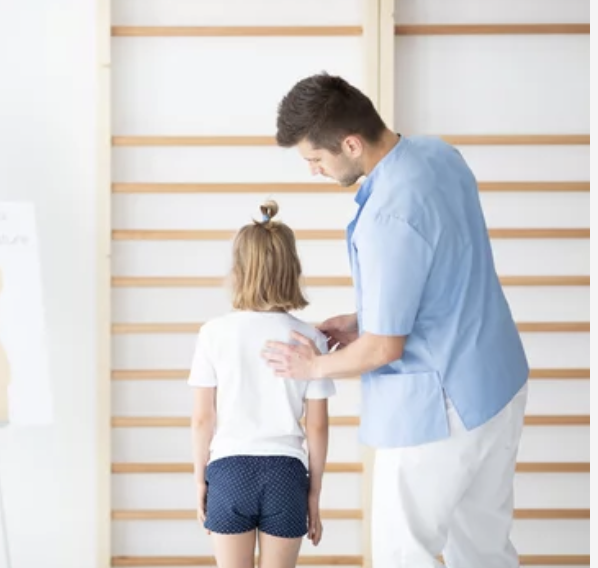Scoliosis, a medical condition characterized by an abnormal sideways curvature of the spine, affects people of all ages, including children. Unfortunately, there are several misconceptions surrounding scoliosis in kids that can lead to misunderstanding and misinformation. In this blog post, we aim to shed light on eight common misconceptions about scoliosis in children.
1. Only Girls Can Have Scoliosis: The idea that scoliosis is only a female ailment is a common misunderstanding. Scoliosis can affect boys as well, however it is true that girls are more prone to acquire severe curves that need to be treated. In fact, boys account for a significant percentage of scoliosis cases.
2. Scoliosis Is Always Painful: Pain is not necessarily a result of scoliosis. Many kids who have mild to moderate scoliosis don’t directly feel back discomfort because of their condition. Severe cases or situations where the curvature affects other structures are more likely to cause pain.
3. Poor Posture Causes Scoliosis: Another common misconception is that poor posture causes scoliosis. Although having proper posture is crucial for the health of your spine overall, slouching or poor posture do not cause scoliosis. The disorder is mostly caused by factors related to development and heredity.
4. Scoliosis Can Be Prevented: Scoliosis is not preventable because lifestyle choices do not influence its major causes, which are primarily inherited. On the other hand, early identification through regular screenings can aid in efficient management and stop the condition from getting worse.
5. Scoliosis Always Requires Surgery: Surgery is not the go-to treatment for all cases of scoliosis. The appropriate approach to treatment varies based on the degree of curvature, the child’s age, and other individual factors. Many children with scoliosis can manage their condition through observation, bracing, or physical therapy.
6. Scoliosis Will Correct Itself: While some mild cases of scoliosis may not progress significantly, the condition typically does not correct itself without intervention. Early detection and appropriate treatment are crucial for preventing further curvature.
7. Scoliosis Is Rare: Scoliosis is not an uncommon disorder. It is thought that between two and three percent of people have some degree of spine curvature. Routine screenings and increased awareness are essential for early detection and treatment.
8. Scoliosis Is a Cosmetic Issue Only: While scoliosis can affect a child’s appearance, it is not merely a cosmetic concern. Severe cases can lead to pain and discomfort, impair heart and lung function, and lower overall quality of life. Proper medical evaluation and treatment are crucial to address the functional aspects of scoliosis.
In conclusion, it’s crucial for parents, caregivers, and healthcare professionals to have accurate information about scoliosis in children. In order to ensure the wellbeing of children affected by scoliosis, it is imperative to comprehend the facts surrounding the condition, debunk common myths, and seek early detection and adequate care. Raising awareness and educating the community about these misconceptions can contribute to better support and care for children with scoliosis.

